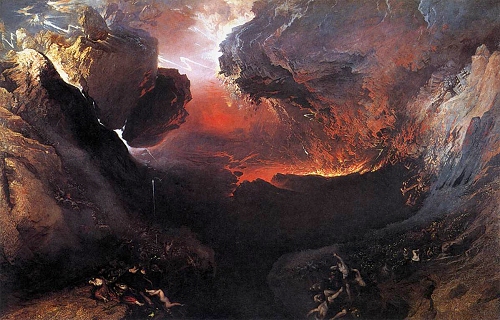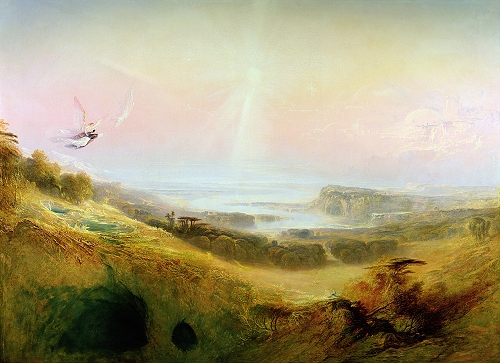
THE BEAUTIFUL

From Kant, Observations on the Feeling of the Beautiful and Sublime (1764):
Finer feeling, which we now wish to consider, is chiefly of two kinds: the feeling of the sublime and that of the beautiful. The stirring of each is pleasant, but in different ways.
The sight of a mountain whose snow-covered peak rises above the clouds, the description of a raging storm, or Milton's portrayal of the infernal kingdom, arouse enjoyment but with horror; on the other hand, the sight of flower-strewn meadows, valleys with winding brooks and covered with grazing flocks, the description of Elysium, or Homer’s portrayal of the girdle of Venus, also occasion a pleasant sensation but one that is joyous and smiling. In order that the former impression could occur to us in due strength, we must have a feeling of the sublime, and, in order to enjoy the latter well, a feeling of the beautiful.
Tall oaks and lonely shadows in a sacred grove are sublime; flower beds, low hedges and trees trimmed in hedges are beautiful. Night is sublime, day is beautiful.
The sublime moves, the beautiful charms.
The mien of a man who is undergoing the full feeling of the sublime is earnest, sometimes rigid and astonished. On the other hand the lively sensation of the beautiful proclaims itself through shining cheerfulness in the eyes, through smiling features, and often through audible mirth.
Deep loneliness is sublime, but in a way that stirs terror. Hence great far-reaching solitudes, like the colossal Komul Desert in Tartary, have always given us occasion for peopling them with fearsome spirits, goblins, and ghouls.
The sublime must always be great; the beautiful can also be small.
Open bold revenge, following a great offense, bears something of the great about it; and as unlawful as it may be, nevertheless its telling moves one with both horror and gratification....
Resolute audacity in a rogue is of the greatest danger, but it moves in the telling, and even if he is dragged to a disgraceful death he nevertheless ennobles it to some extent by going to it defiantly and with disdain.
-German title: Beobachtungen über das Gefühl des Schönen und Erhabenen.
(Illustrations are John Martin, The Great Day of His Wrath, 1851-53; and The Celestial City and the River of Bliss, 1841.)
I really found this post very useful in understanding the concepts of Beautiful and Sublime as expounded by Kant. I like the way you compared them using these paintings. Kudos!
ReplyDelete